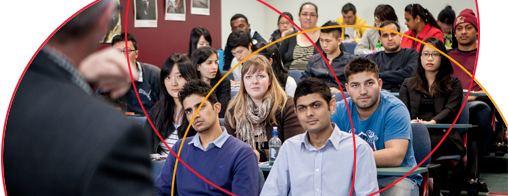Online Journal of International Education
Volume 2, Number 1, 2017
Editor: Dr Adam Brown; Director of Research, Auckland Institute of Studies
Preface
Some of the papers here were given as presentations at the 7th Biennial CRIE conference held in January 2016, where the theme was “Trends and issues in international education”. One clear trend that emerged from that conference was the increasing use of IT in education. The first three articles here discuss this topic.
Completion rates in online courses
Nevan Wright and Sui Tinai give a historical overview of the development of teaching methods other than face-to-face, especially distance learning, along with the pros and cons of virtual education. The main thrust of their article is a comparison of the completion rates of traditional face-to-face education (“bricks and mortar” in educational institutions) versus online courses (“clicks and tricks”). While bricks and mortar education has completion rates of over 80%, the highest rate for virtual education is 22%. Blended learning involving both modes is likely to be the predominant method in the near future, rather than 100% online delivery.
Blogs in an English for Academic Purposes course
Good examples of blended learning are contained in the next two articles. Tatiana Petrichtcheva describes the value of blogs in an English for Academic Purposes course designed to help international students raise their proficiency in Academic as well as General English, in order to achieve the level required for entry to tertiary study. While there are face-to-face classes, the use of a regular blog allows students to practise their writing skills and to comment on their classmates’ writing.
Wikis in collaborative learning
Similarly, Tangi Steen and Dale Wache used wikis, in addition to face-to-face teaching. Wikis are collaborative projects where students work together online to modify the structure and content of documents, without being physically together in the same room. Both blogs and wikis require some preparation of the technical aspect, as well as the content of the blog or wiki, and introducing students to the format and value of the blog or wiki. However, they produce beneficial effects, as evidenced by the generally positive feedback from the students, in that they allow for practice of valuable skills, including the ability to work collaboratively in teams, a soft-skill competence that is necessary when students graduate and join the workforce.
Noise trading and the Chinese stock market
The final article is one submitted to the predecessor of the Online Journal of International Education, the Journal of International Education and Business. Wenyu Huo and Sawsan Al-Shamaa examine the phenomenon of noise trading, that is, the behaviour of investors who buy and sell, not by following sound economic principles, but by reacting often with poor timing to potentially risky short-term trends. They adopt an Evolutionary Game Theory approach that relates to trial-and-error activity, applying it to the Chinese stock market. They conclude that Chinese investors should adopt a longer-term view to investing, and that the Chinese government’s regulatory body should act to reduce the effects of such noise in order to produce a more stable stock market.
Book review
Finally, continuing the topic of online mechanisms, Kenneth Jackson reviews Anke Schwittay’s New media and international development: Representation and affect in microfinance. As Jackson explains, “The role of the new media is viewed as allowing ‘virtual stories’ to augment or replace the current stories which are propounded as reasons for supporting microfinance, but the power of the bloggers, websites and the like has greatly increased the impact of the process.”
Adam Brown
Editor, Director of Research

